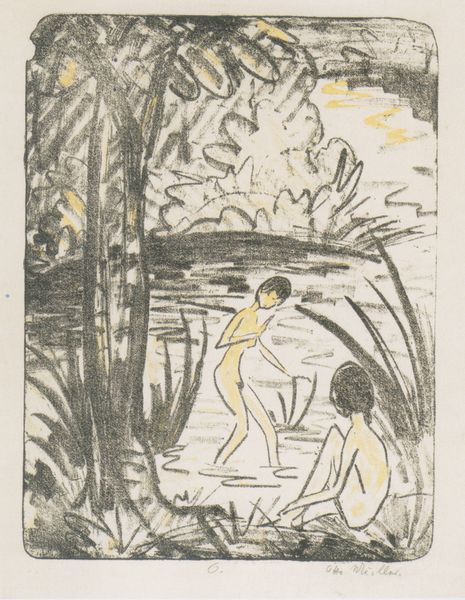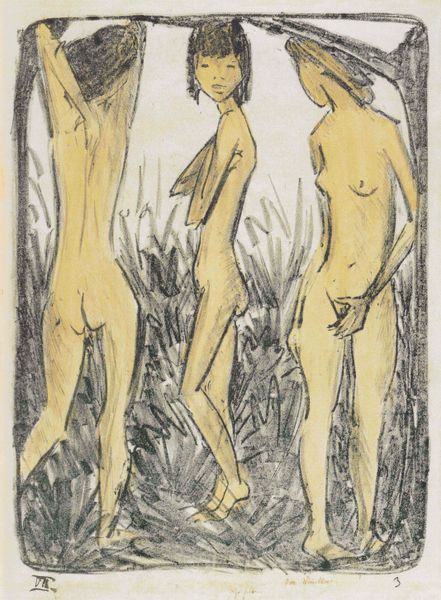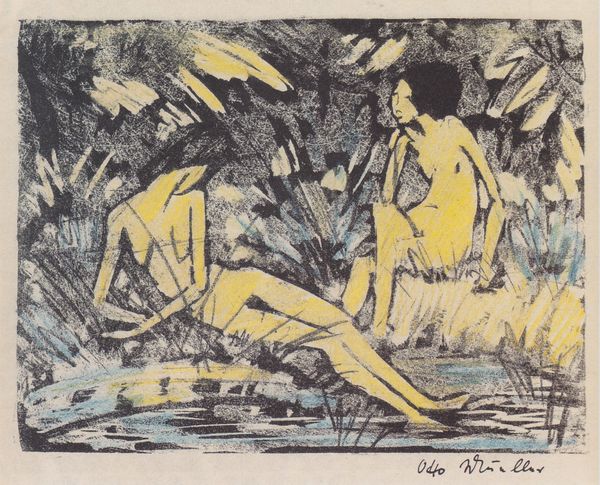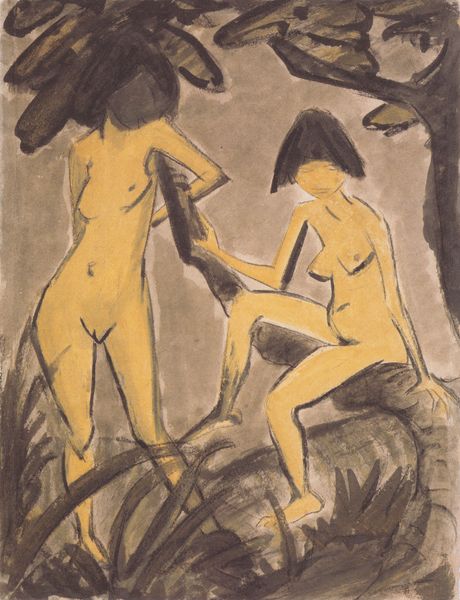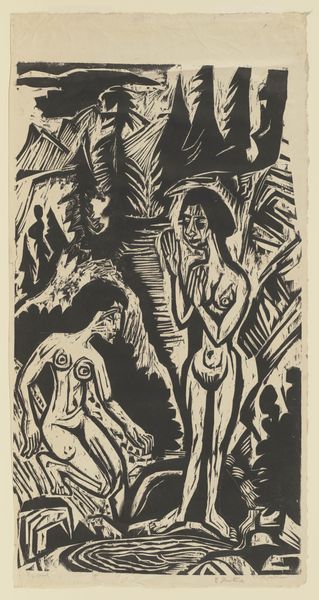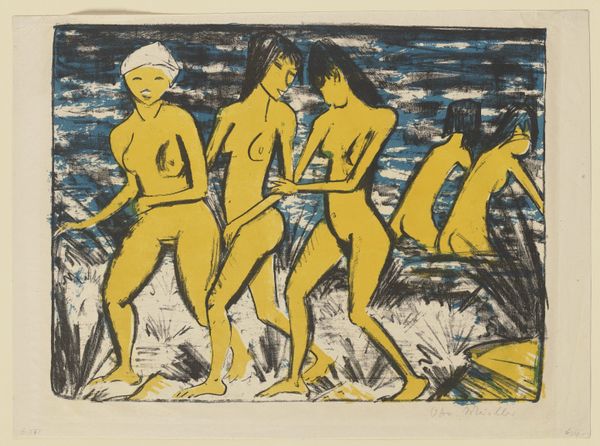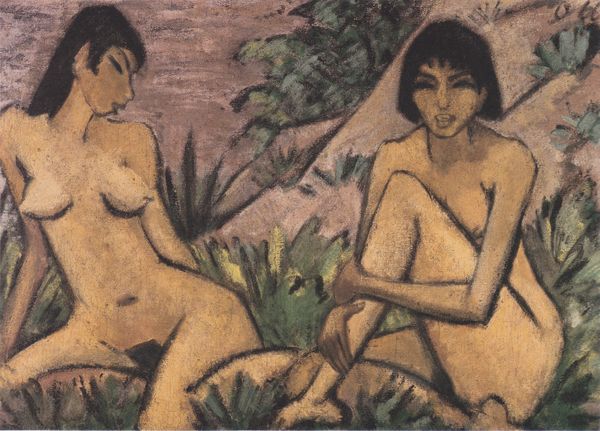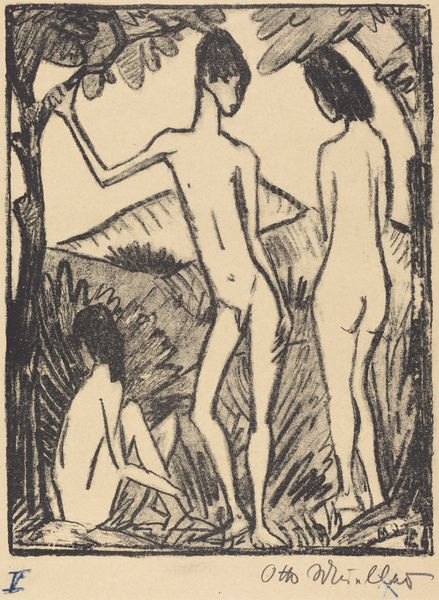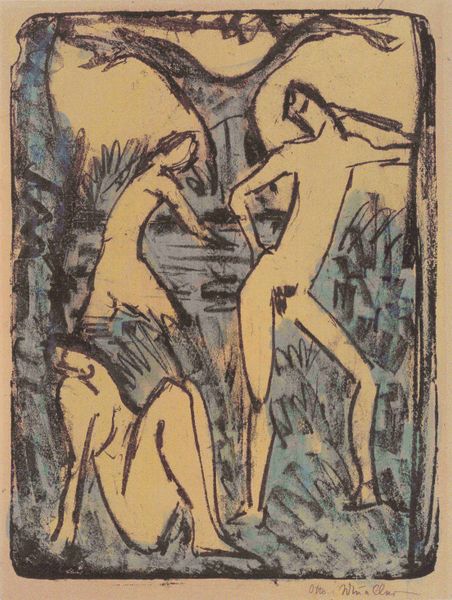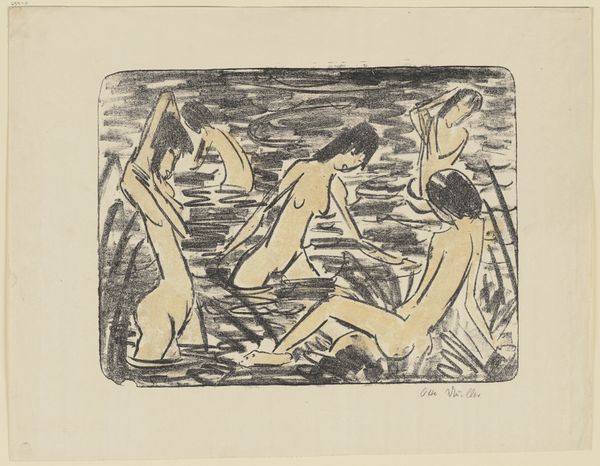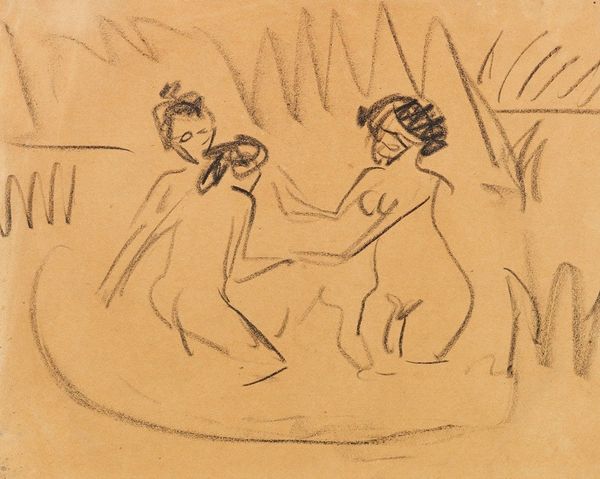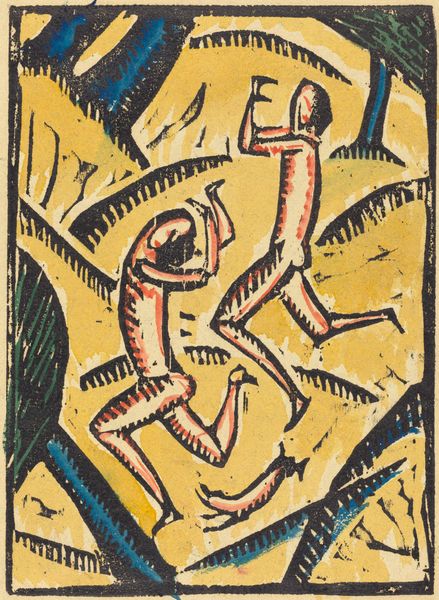
print, linocut
#
ink drawing
# print
#
linocut
#
landscape
#
german-expressionism
#
figuration
#
linocut print
#
expressionism
#
nude
Dimensions: image: 27.94 × 38.74 cm (11 × 15 1/4 in.) sheet: 43.97 × 53.34 cm (17 5/16 × 21 in.)
Copyright: National Gallery of Art: CC0 1.0
Curator: This is Otto Mueller’s circa 1920 linocut print, "Finding of Moses," or "Auffindung des Moses" in German. Editor: Immediately, the striking contrast of black and yellow against the white of the paper creates an otherworldly, almost dreamlike atmosphere. It has a very tactile presence, too. Curator: Absolutely, that's the nature of the linocut medium. The process of carving into linoleum forces a simplification of form and emphasizes bold lines, really speaking to the materiality of printmaking. Look at the hatching used to create tone and volume, building density and texture, like the dense reeds in the background. Editor: And that restricted palette emphasizes the primal nature of the narrative. We see these stylized figures surrounding what appears to be a baby, set within this stylized landscape. The emotional core resonates—the universality of a life discovered. Curator: Well, "discovered" is key here. The print, being a linocut, would have allowed for multiple reproductions. This directly influences the work's context, it's no longer precious. It challenges established academic modes by exploring narratives through affordable and readily accessible prints, like many other Expressionist artists working at the time. Editor: Even though simplified, certain motifs really resonate. Notice how the surrounding figures frame the central mother and child, alluding to protection. It gives the narrative a deeply human quality. Do you see in their gestures something akin to reverence or awe? Curator: I see them certainly stylized and simplified—it's consistent with Expressionist aesthetic aims. Their forms almost become geometric, part of the process to reject realism. Editor: Despite that rejection, the potent imagery really touches upon something archetypal about creation and motherhood, made even more profound through Mueller's material choices. Curator: Yes, both its making and symbolic content really converge into a potent cultural object of its time, an object existing within an era of dramatic artistic shifts. Editor: It's amazing how much emotion Mueller packed into those simple lines and bold shapes, isn’t it? Curator: A fitting summation, especially when appreciating its roots within German Expressionism and its clever employment of more accessible printing processes.
Comments
No comments
Be the first to comment and join the conversation on the ultimate creative platform.
